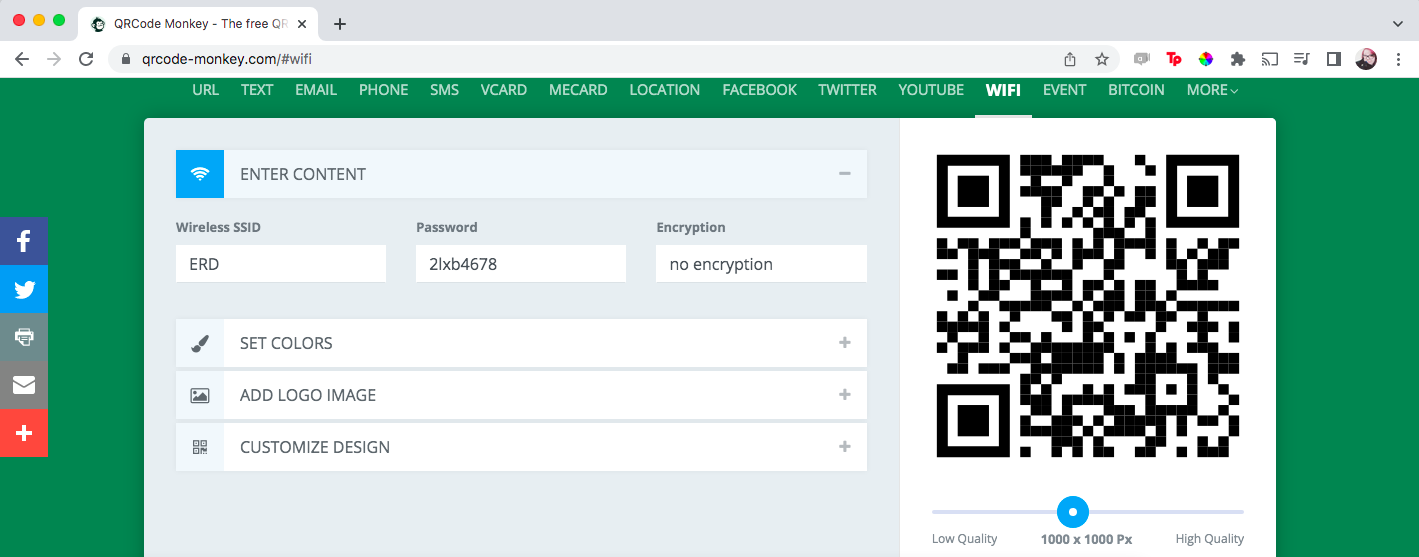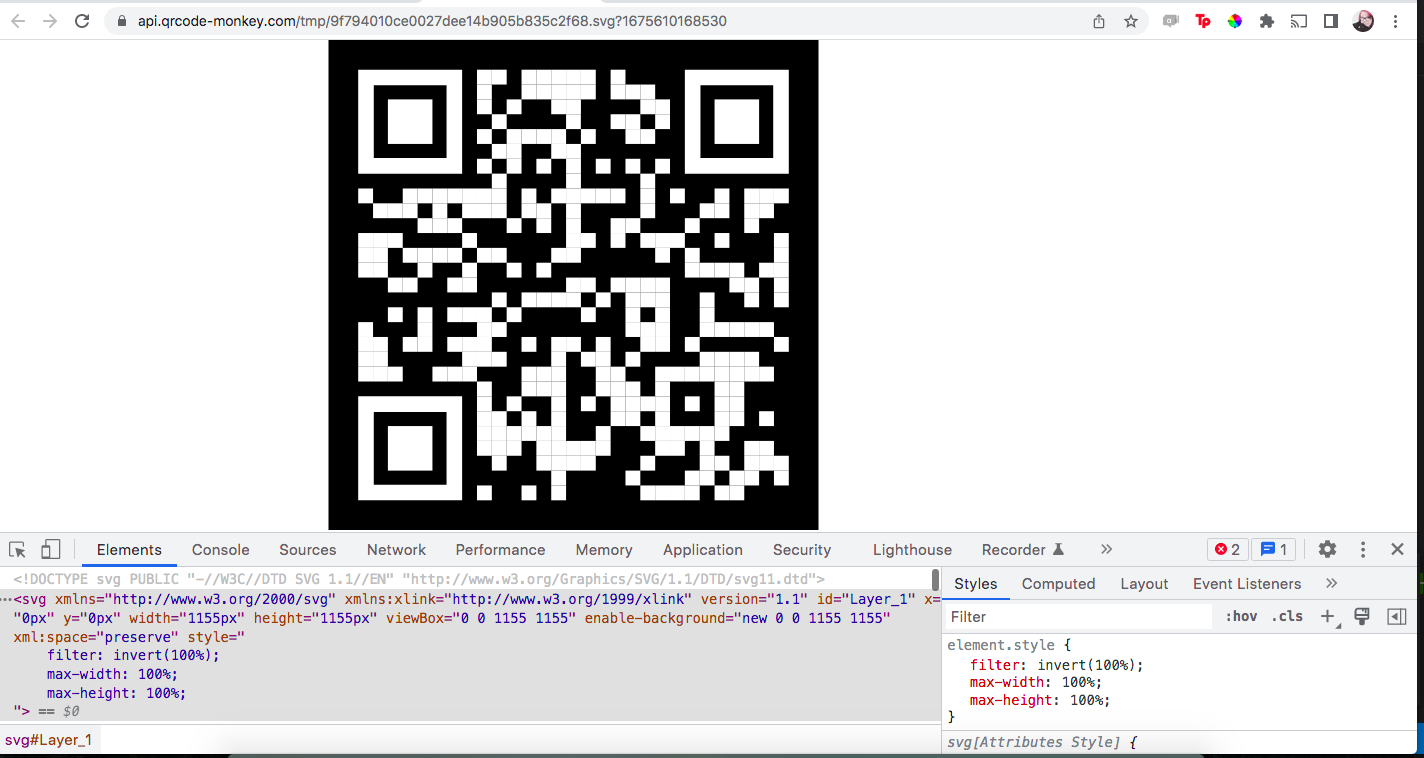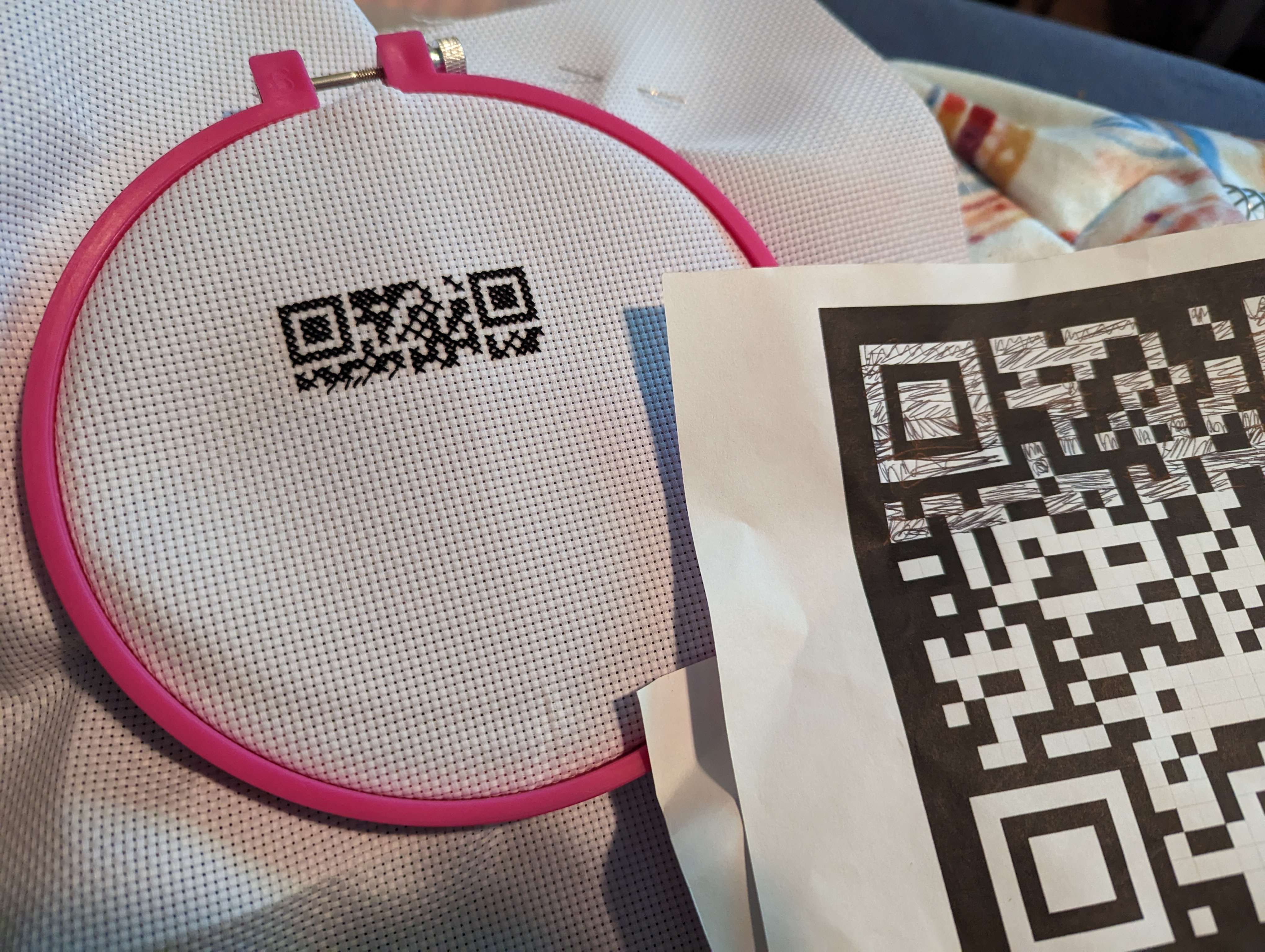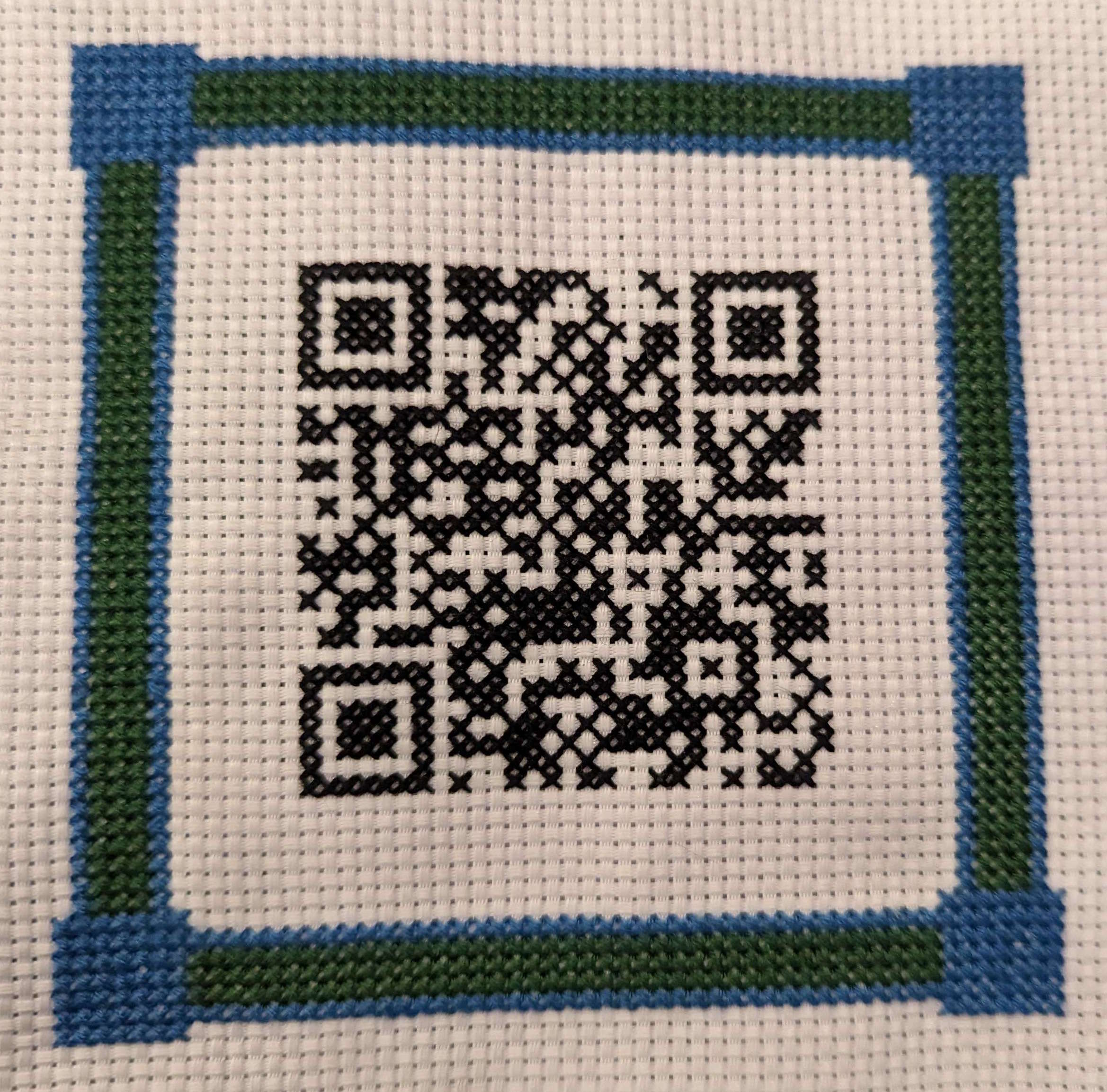How-To
The first step in creating your own cross-stitch QR code is to go to an online generator and create the code itself. I like to use QR Code Monkey; it's free, it supports a wide range of data types, and it generates its QR codes as SVGs, which will become relevant in a moment. Below is an example of a QR code cross-stitch that logs you on to my friend Emily's wifi.

The QR code generated is a useful representation of our end results, but it isn't a very helpful pattern, because all of the pixels we're going to stitch are already filled in; it's hard to keep track of where you are in the pattern.
To solve this problem, right-click on the pattern in your browser and select "inspect element." Then, in your developer tools, make sure the svg element is selected, and then add the following styles:
filter: invert(100%);
max-width: 100%;
max-height: 100%;
The filter inverts the colors of the svg, so that you can mark off the stitches as you make them. Setting the max-width and max-height means that when you print the page, it will print on a single page intead of attempting to spread itself across a few different pages.

Now, all that's left is the stitching! Treat the page you printed out like a stitching pattern. Make a stitch for every empty white square on the page, and mark them off as you get them done (or, in my case, as you finish a row).

After the QR code itself is done, you can add a decorative border! Be sure to take the time to measure a quarter inch around your QR code, and leave that quarter inch empty buffer. If you crowd the code, it might not scan consistently, or at all.
